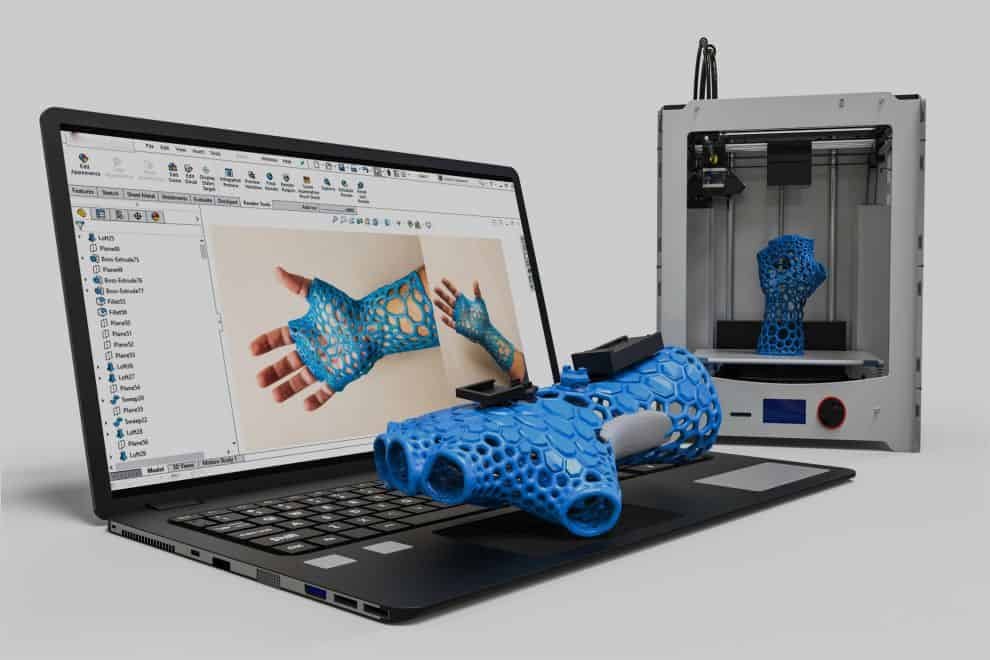Additive manufacturing is a game-changing technology that has revolutionized how goods are produced. It uses 3D printing to create complex products with unparalleled accuracy and speed.
Understanding how additive manufacturing works is essential to take full advantage of its benefits. 3D printing has revolutionized the way products are made and can be used in various industries. With the proper understanding, businesses and individuals can use this technology to their advantage.
One way to improve the design process for additive manufacturing, especially in engineering applications, is to use a 3D visualization program like that offered by Spatial.com. Utilizing this software can help users correct any design issues as early as possible.
If you’re curious or want to take full advantage of this revolutionary technology but don’t know where to start, read on. You wouldn’t want to miss out on discovering the possibilities of additive manufacturing for your business or project.
What Is Additive Manufacturing?
Additive manufacturing is the construction of physical objects layer by layer. It’s also known as 3D printing or rapid prototyping and has been used in many industries. It first appeared in the 1980s when Charles Hull invented stereolithography. This process creates 3D objects by curing liquid photopolymers layer-by-layer with ultraviolet light lasers.
Since then, many other processes have been developed. They use different materials like polymers or metals to create complex parts quickly and cost-effectively with just one machine.
The evolution of additive manufacturing over the past few decades is impressive—from basic plastic prototypes to highly complex metal components used in aerospace applications. Recently, a team created a 3D-printed house in just 24 hours. It continues to develop and improve daily, making it an invaluable tool for industry professionals worldwide.
How Does Additive Manufacturing Work?

Now that you know what additive manufacturing is, it’s time to explore how it works with these four steps:
1. Designing The 3D Model
Designing the 3D model is an essential step in additive manufacturing. The process starts with a computer-aided design (CAD) file, which can be obtained from various sources or created by the user. This file contains information about the shape and size of the object to be printed. It should include other data such as color, texture, and support structures if needed.
Once this file has been uploaded into a 3D printer’s software program, it will be transformed into instructions for the machine to follow during printing. The instructions tell the machine where to deposit material and how thick each layer should be. When all necessary parameters have been set up correctly, the 3D printing begins.
Careful attention must be paid when designing a 3D model: any mistakes made at this stage are hard to fix afterward and may lead to poor print quality or failure of the entire project altogether.
2. Preparing The 3D Printer
Before using a 3D printer, the necessary software and drivers must be installed on a computer connected to the printer. Then, the spool of filament needs to be loaded into the machine. The type of filament used will depend on what material is being printed, such as plastic or metal.
Once everything has been installed and set up correctly, it’s time to start printing. The user sets parameters such as size, speed, and layer height in their chosen 3D printing program before sending the file to the printer for production.
3. Printing The Object
A CAD file or a scan of an existing object should be uploaded into the printing software. Then, the user can customize parameters such as layer thickness, fill density, and print speed.
The process begins with extruding melted plastic filament onto a build platform through a nozzle. The molten material cools and hardens quickly, forming layers that stack upon each other until the object reaches its desired height.
Afterward, supports can be added to any overhanging parts so they don’t collapse during printing. Once complete, the pieces can be removed from the bed and post-processed if necessary.
4. Post-processing The Object
This process removes excess material and ensures the surface finish meets customer requirements. It usually involves sanding and smoothing down rough edges to make them more aesthetically pleasing. In some cases, heat treatment may also be necessary for strength and durability.
Post-processing can take several hours, depending on the complexity of the part or product being produced. Nevertheless, it is an essential step in additive manufacturing as it improves the form and function of a 3D print.
Without proper post-processing, the prints won’t meet the specific standards customers or manufacturers require. Therefore, this step should never be skipped when producing parts with an additive manufacturing system.
Takeaway
Additive manufacturing gives designers the flexibility to create things never before possible with traditional methods, opening new possibilities for innovation across many industries.
The future looks bright for additive manufacturing—it will only become faster and cheaper over time, allowing the creation of even more intricate designs at a fraction of the current cost. As companies continue to discover ways they can use 3D printing in their processes, its impact on people’s lives will grow significantly in years to come.
ALSO READ: 5 Advantages and Disadvantages of Artificial Intelligence you should read










